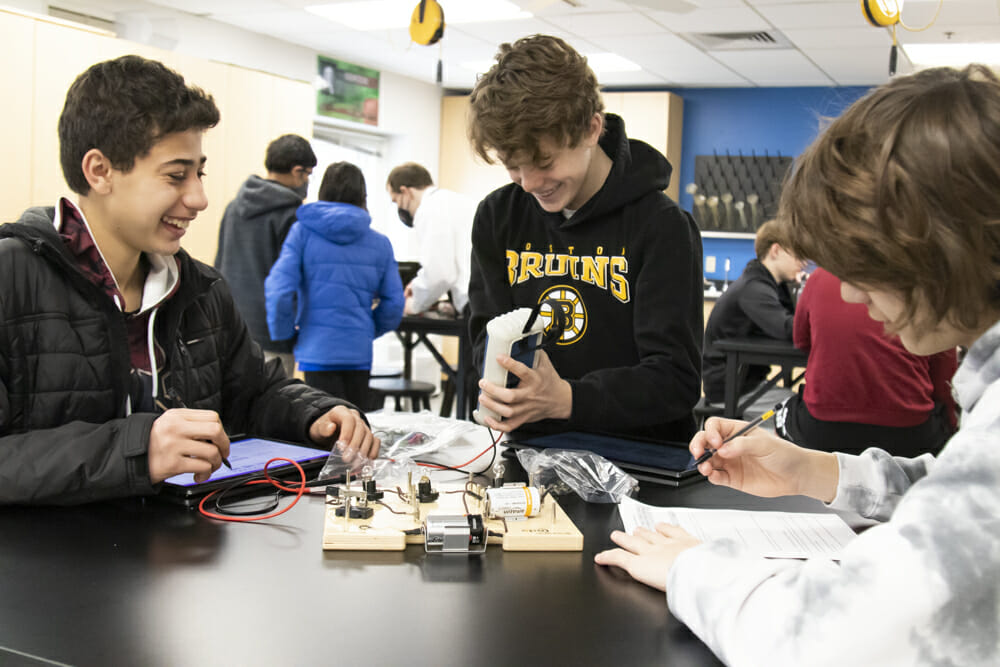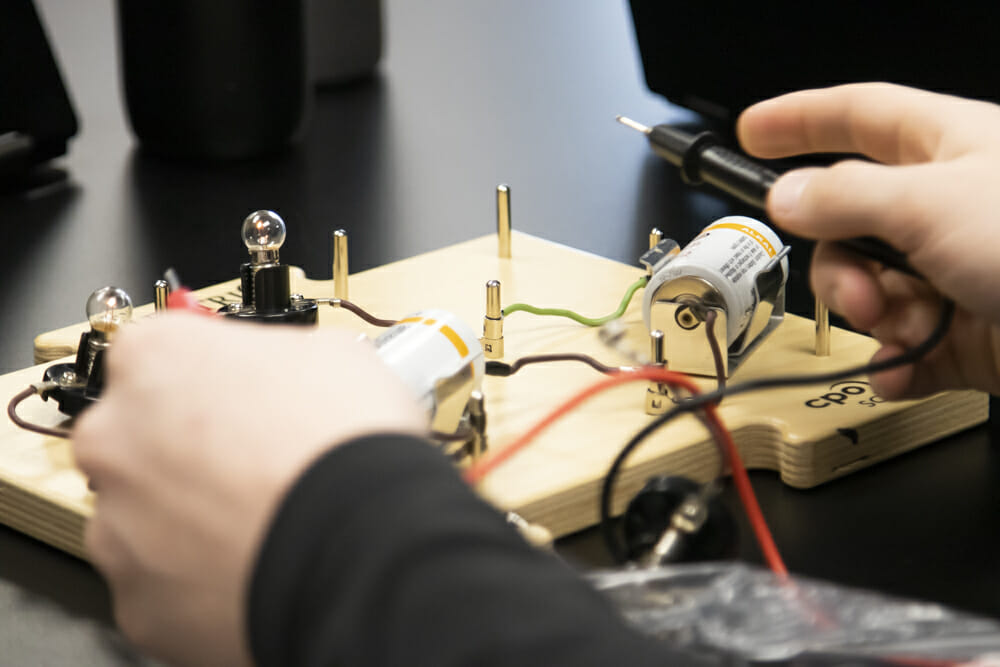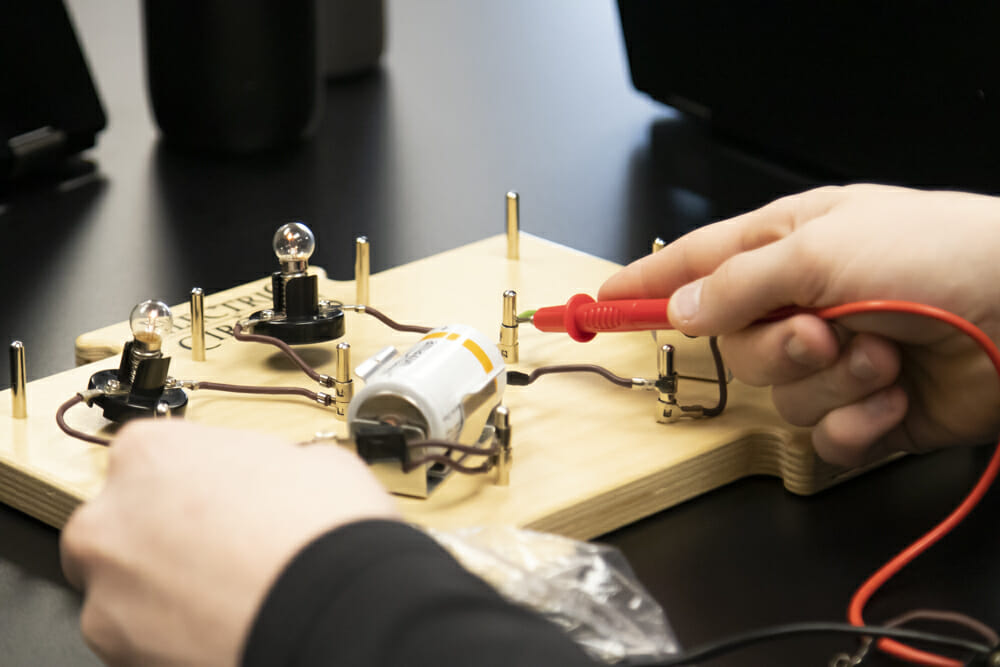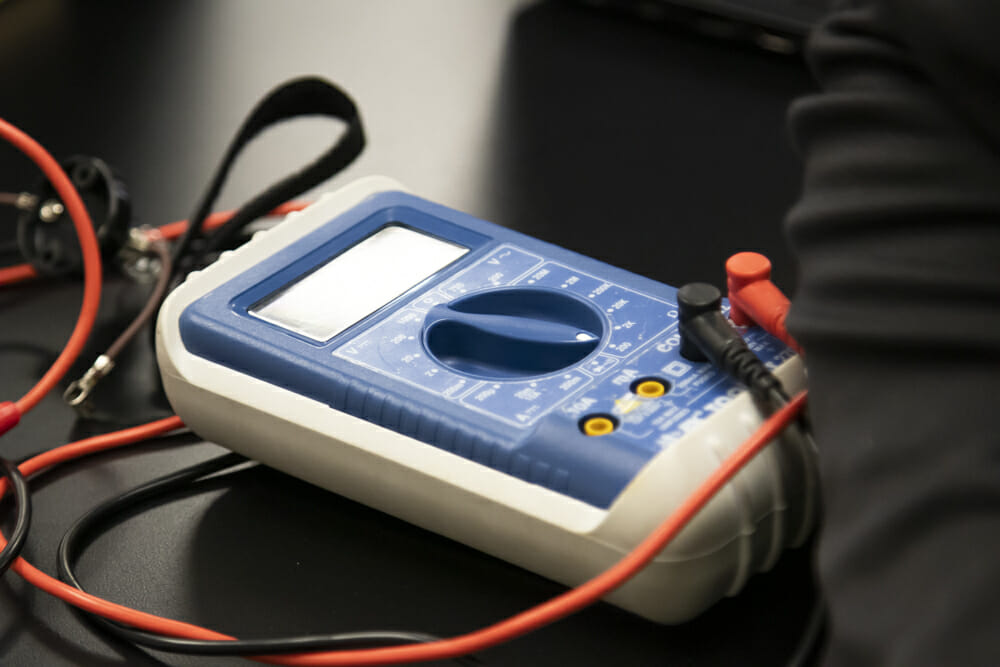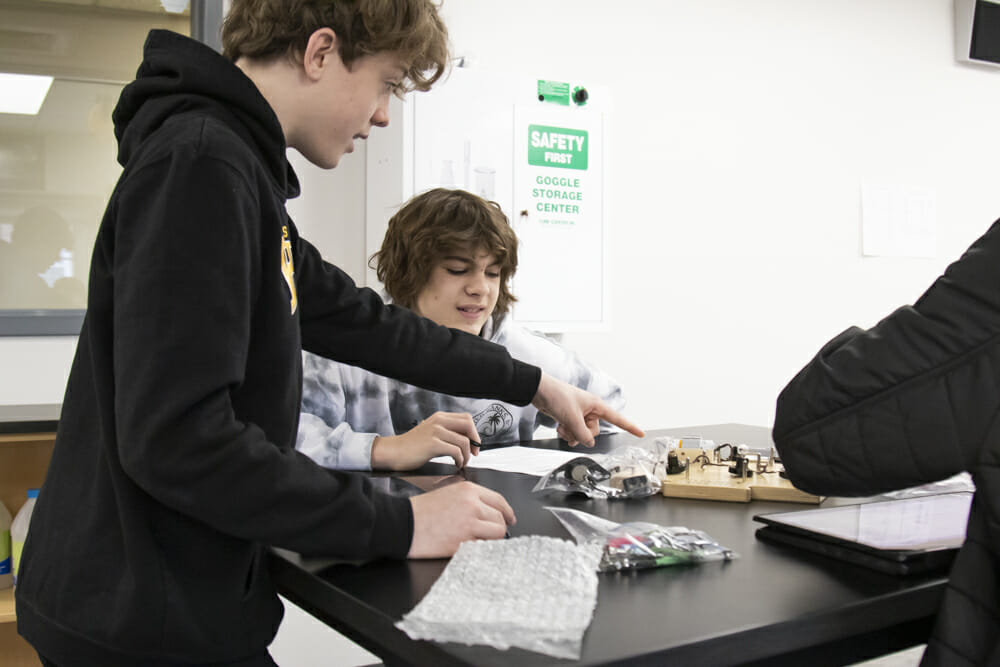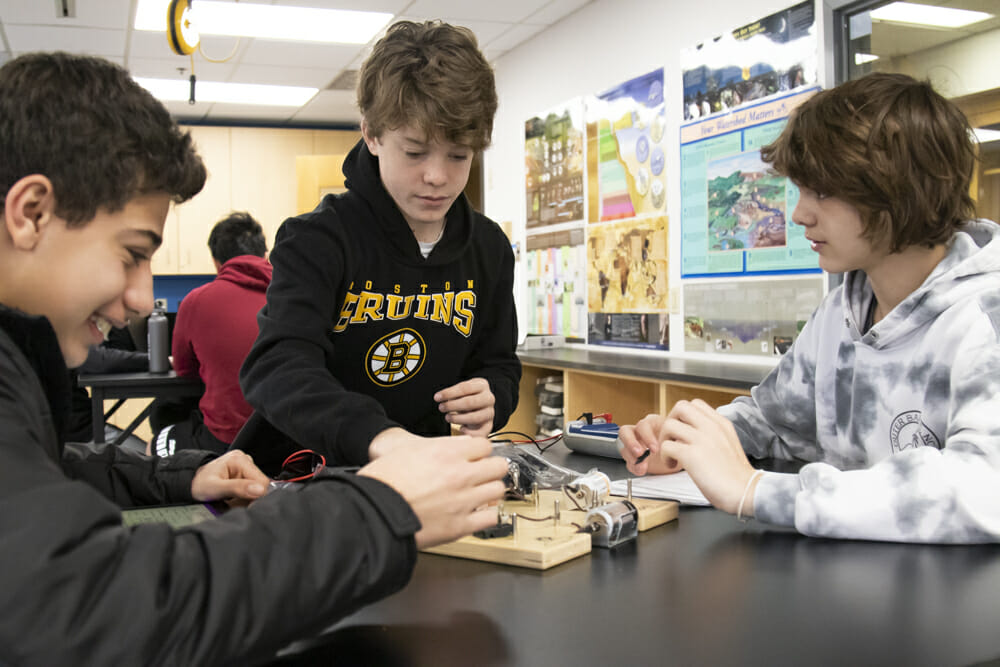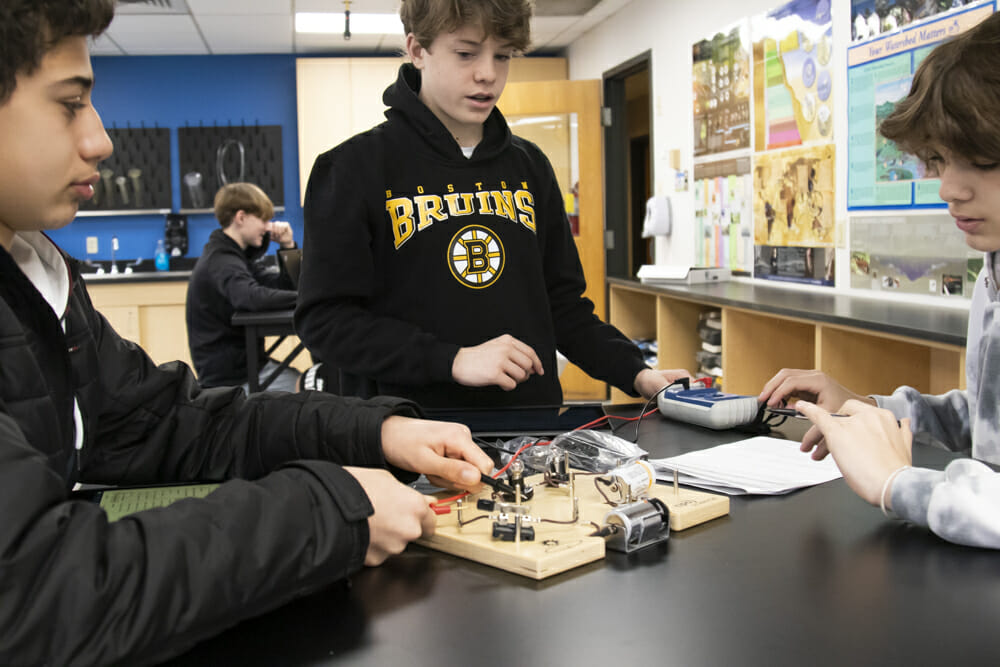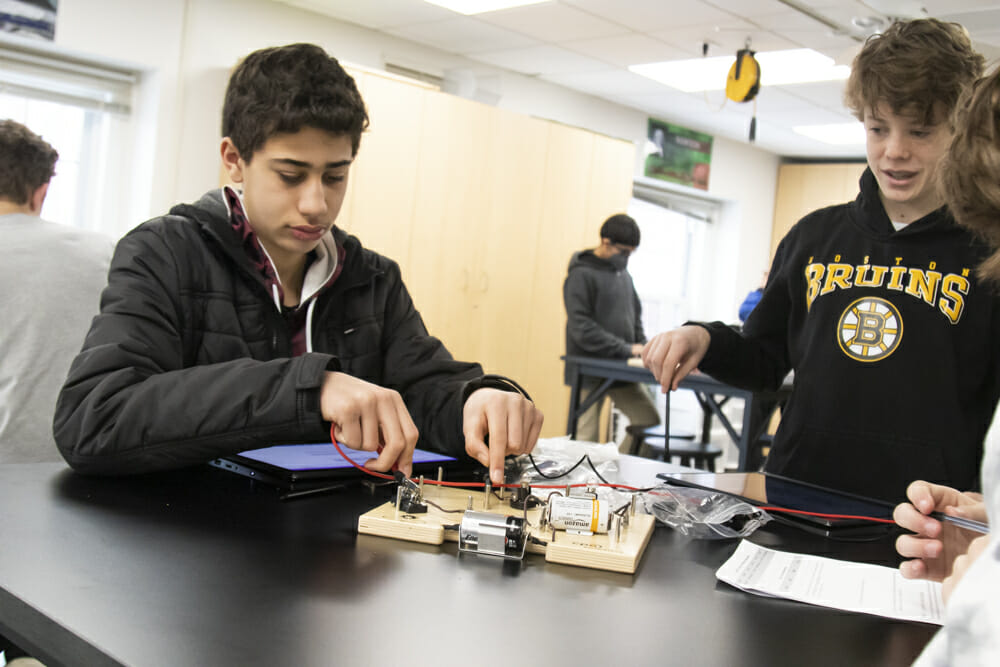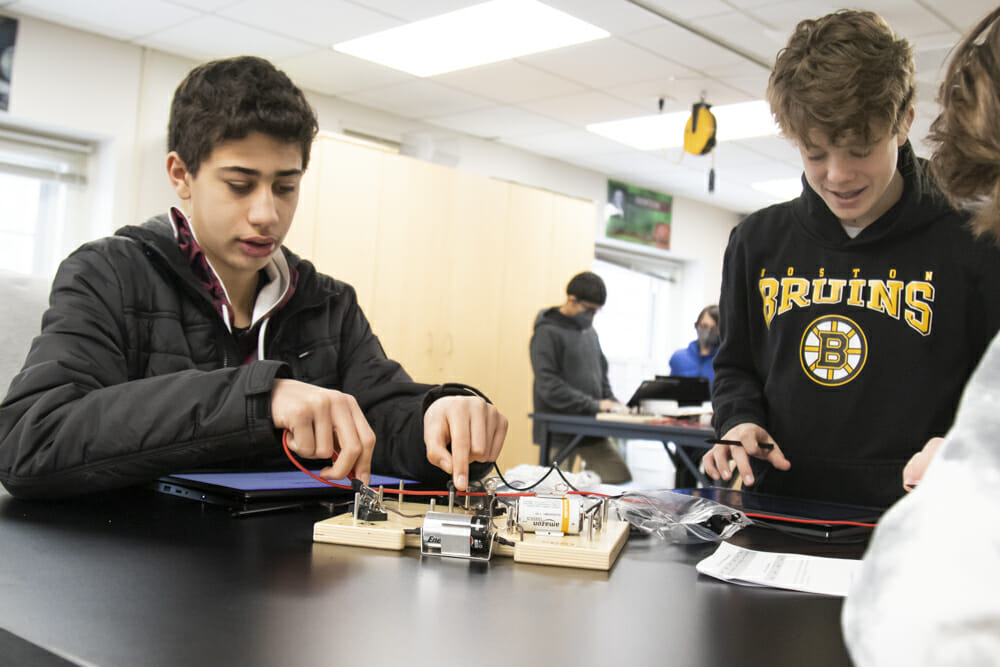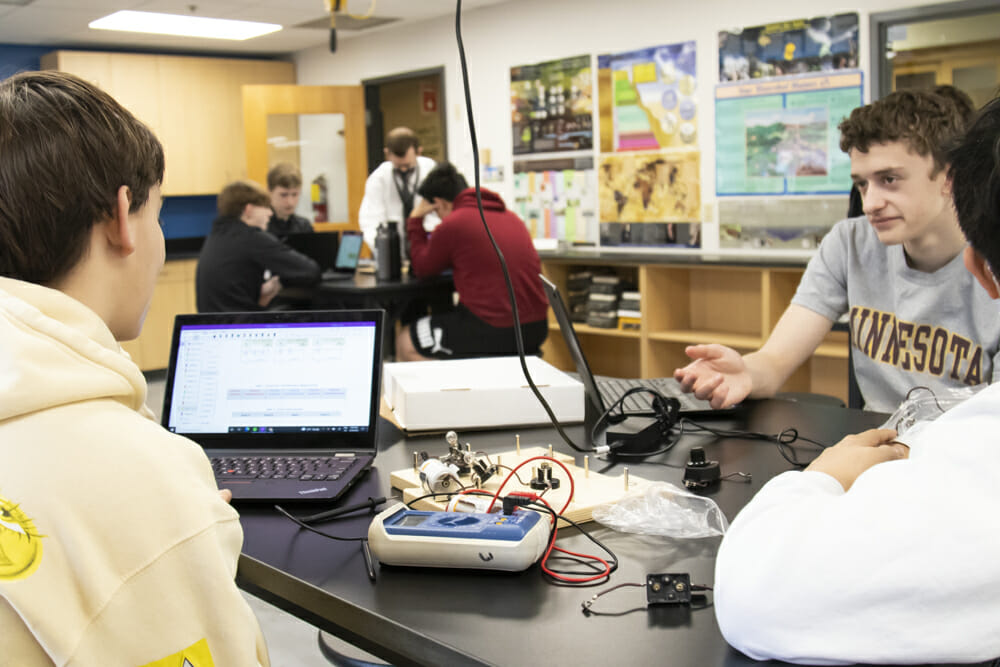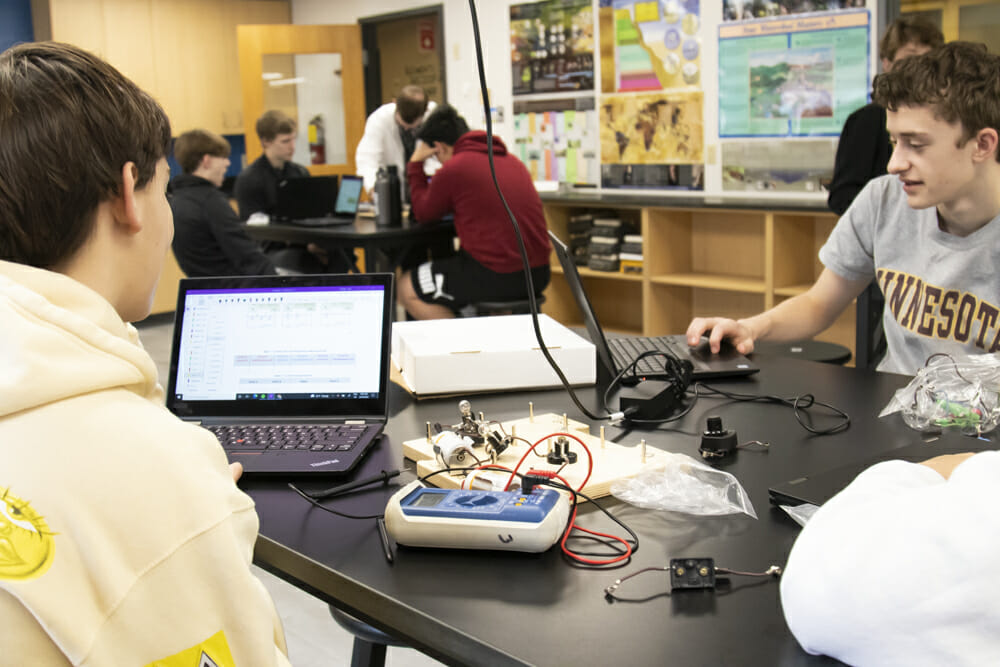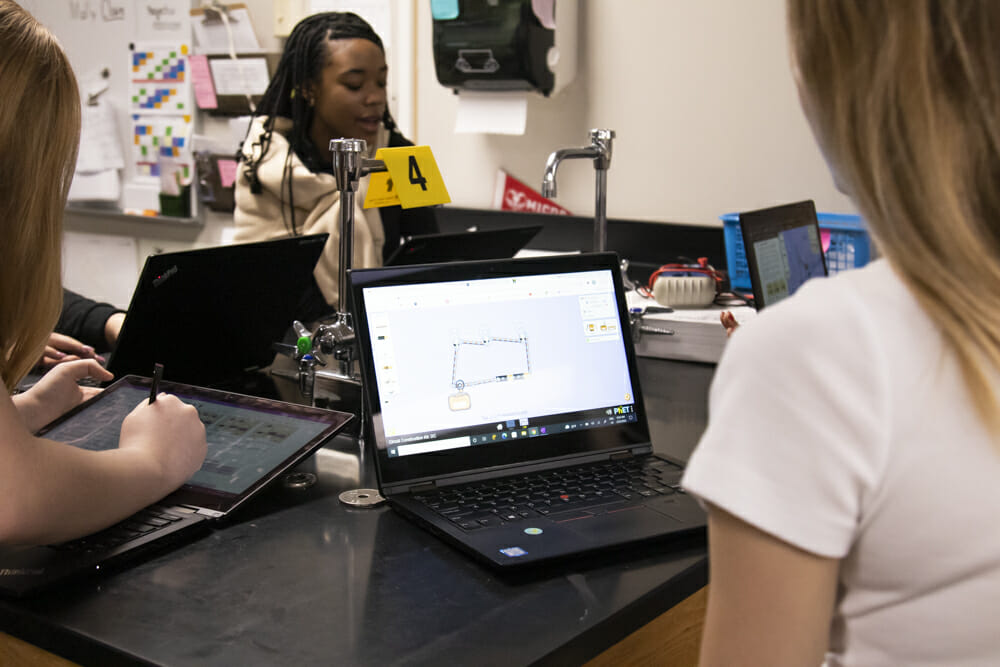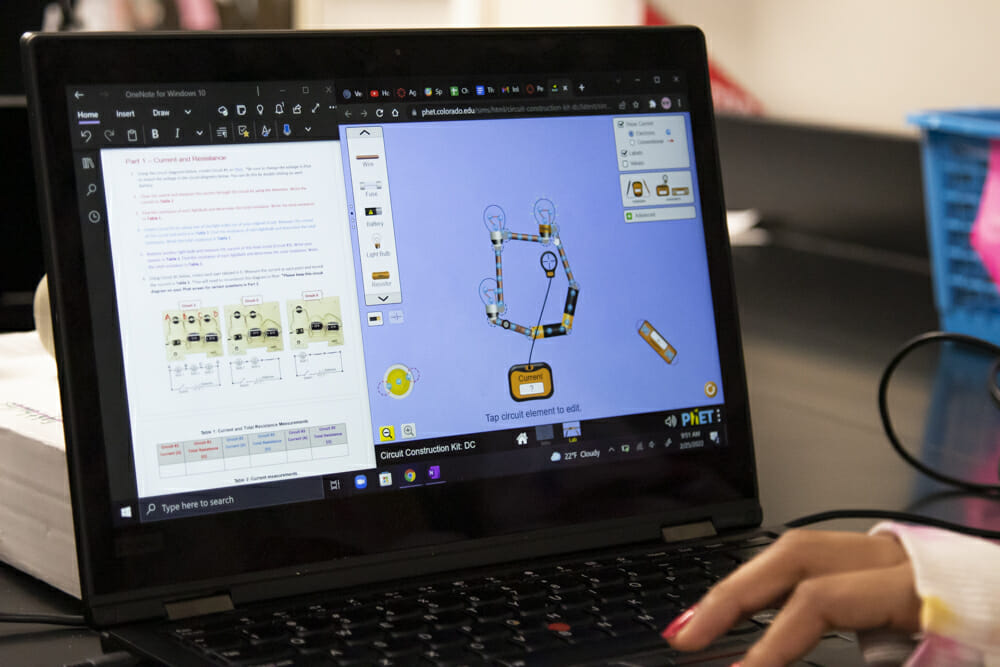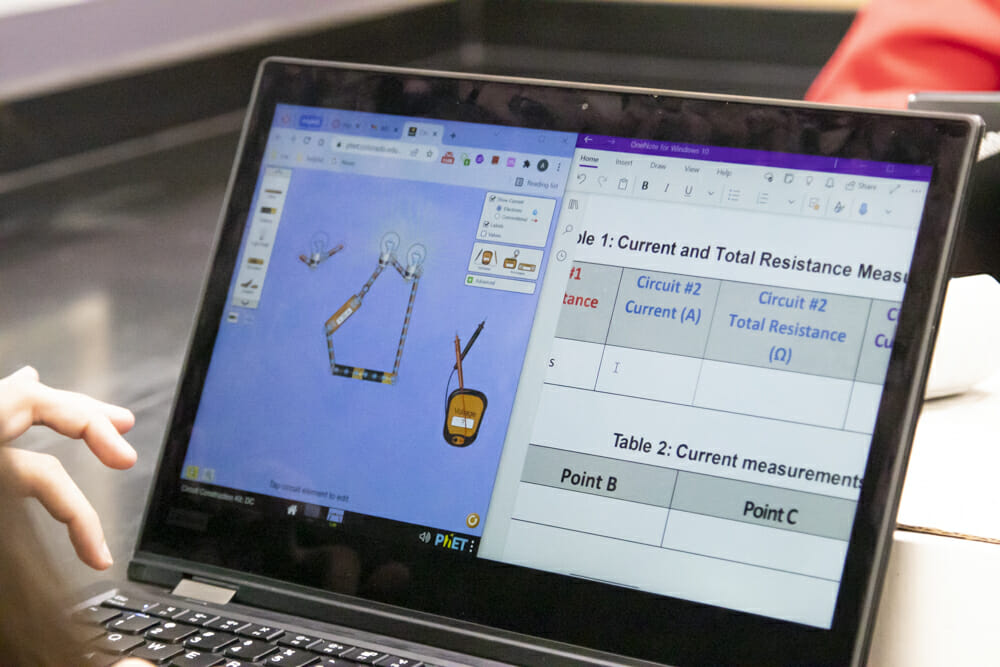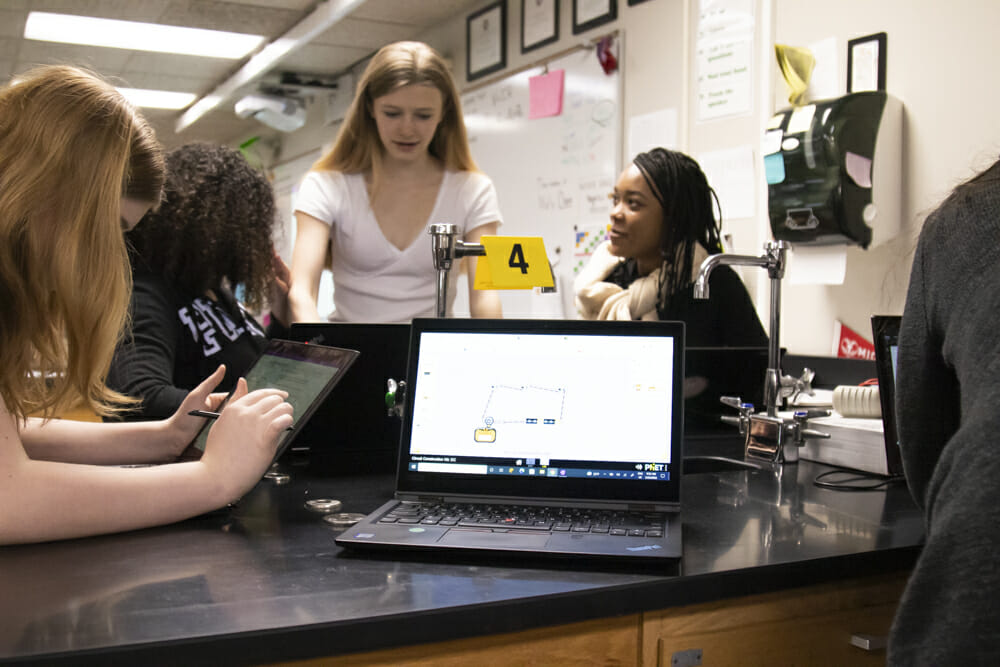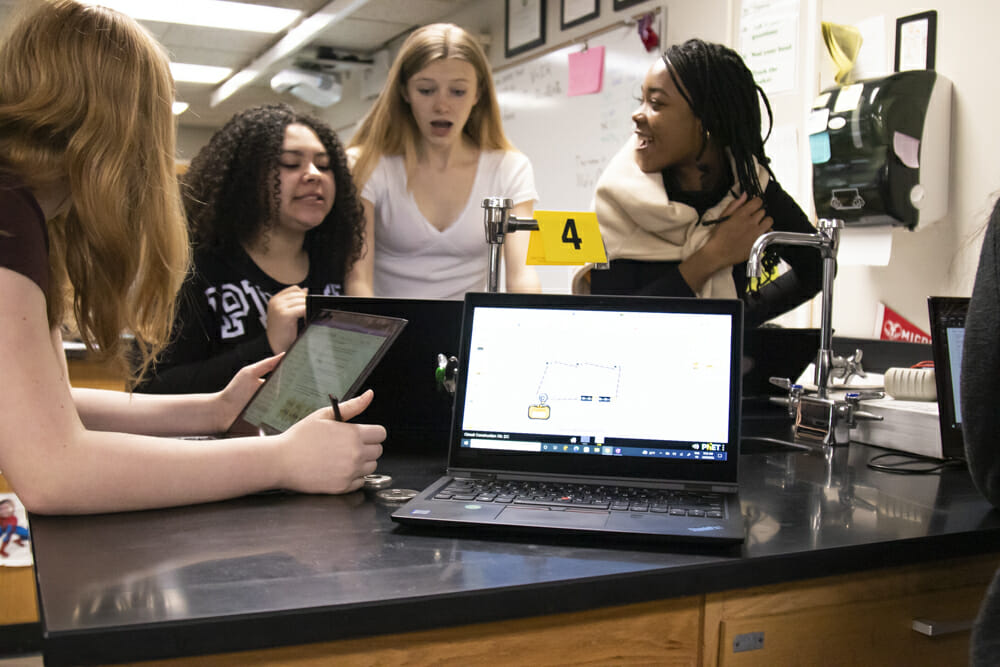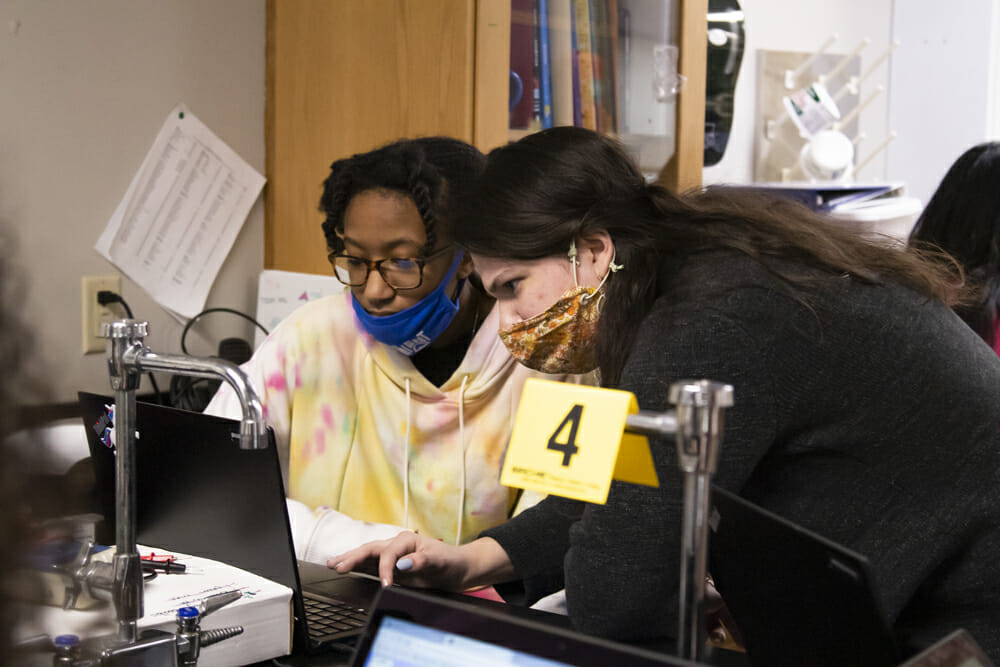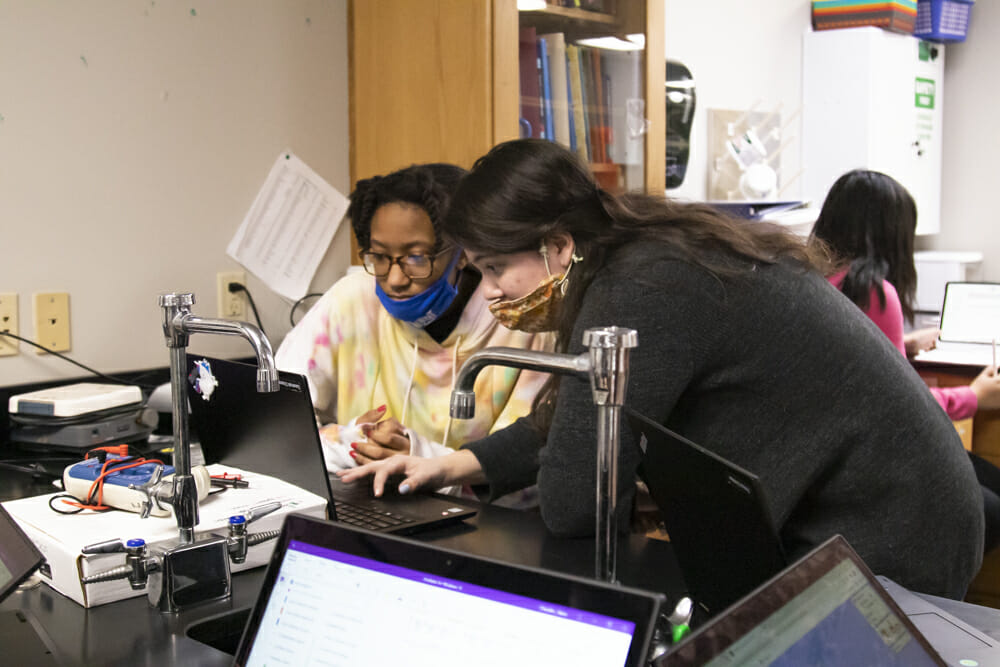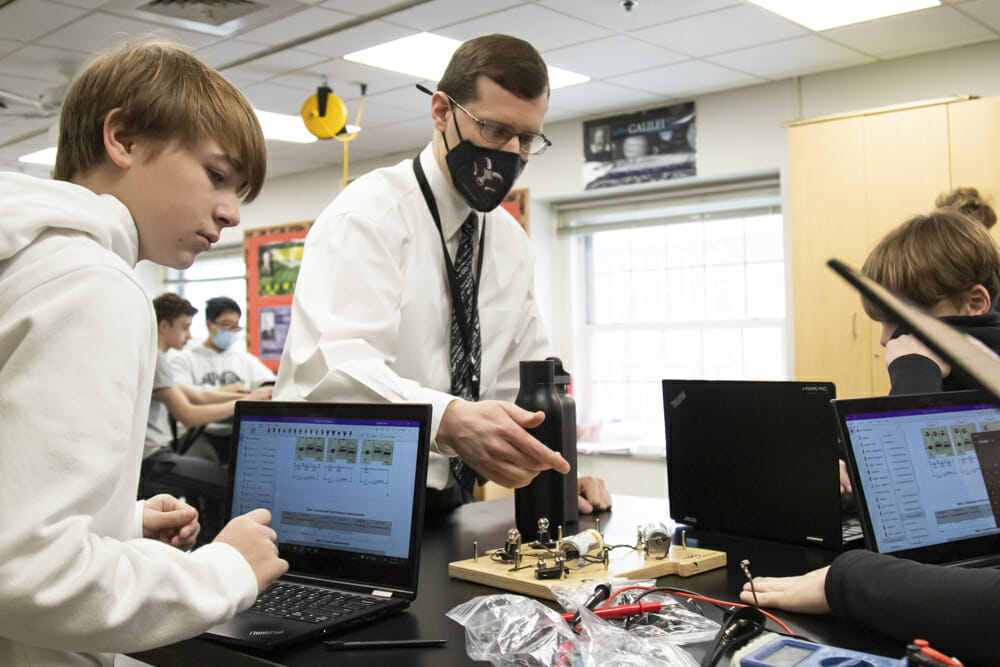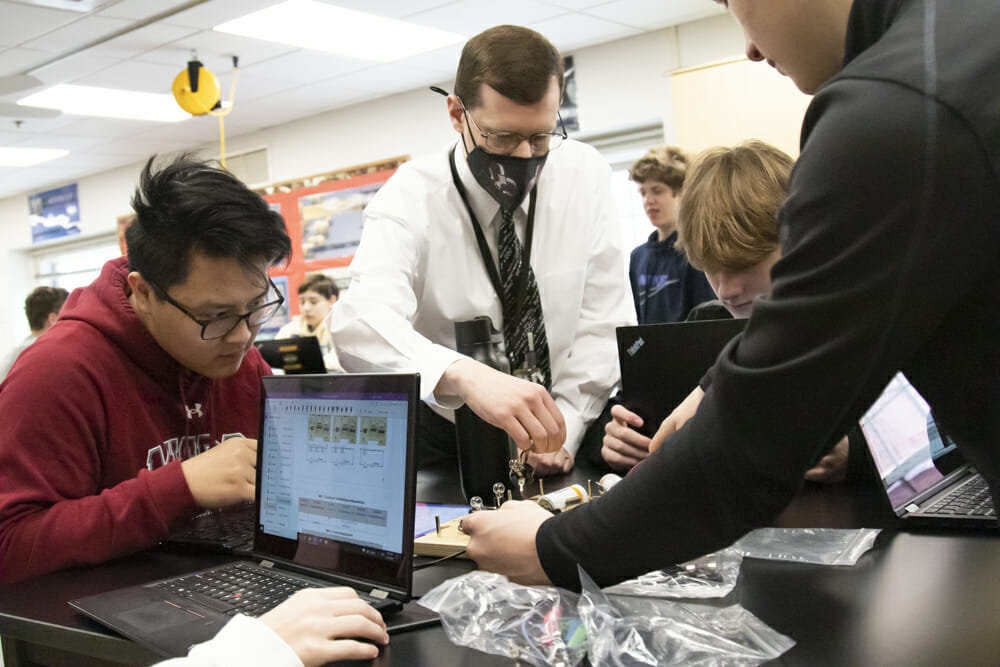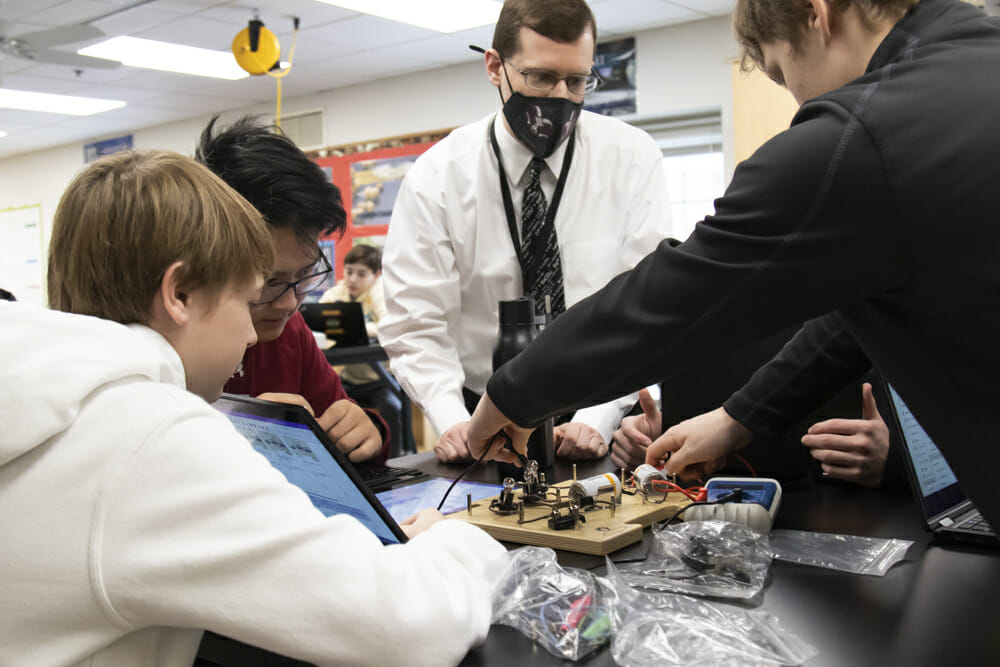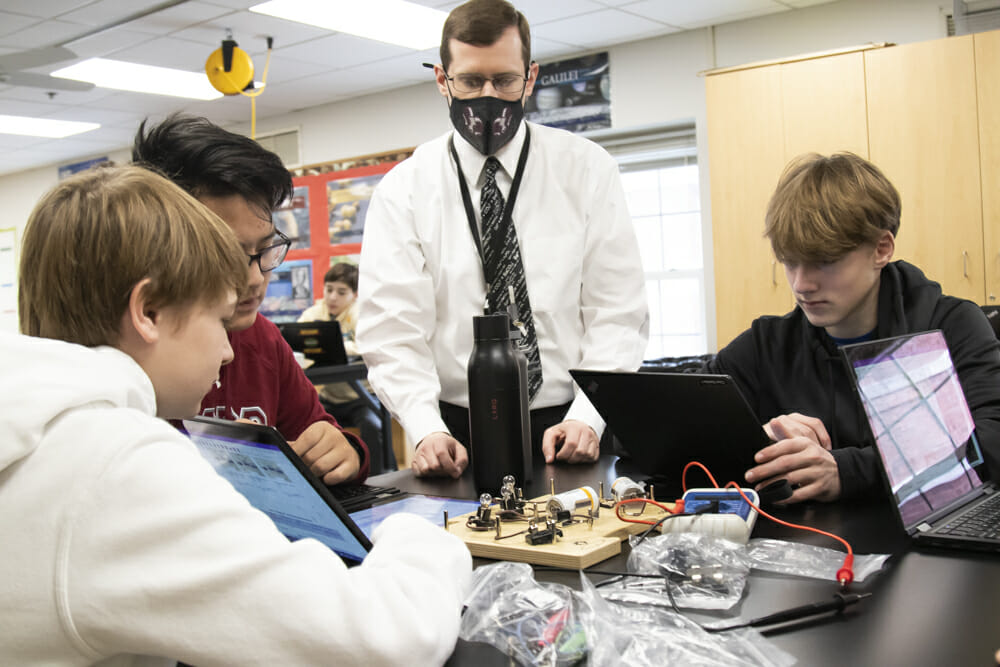Eighth graders are sparking new pathways to learning by building circuits! How can devices be connected to circuits? What happens to circuits when you remove one or two elements? What laws of electricity make this happen? These questions and more were answered when students created series circuits to power small devices.
According to Middle School Science Teacher William Bander, “A simple electric circuit typically contains one electrical device, a battery, and a switch. For example, flashlights use this type of circuit. However, most electrical systems, such as televisions and computers, contain many electrical devices connected in multiple circuits. This lab introduces students to just one way to connect multiple devices in a circuit.”
Using a diagram of a circuit, students embarked on the journey to build switches, measure the voltage of the current running through a circuit using a multimeter, and measure the resistance of each lightbulb connected to it. Finally, students changed the lightbulbs and retested the current resistance to take it a step further.
Eighth graders examined each step of the process all while using quantitative data to support their reasoning. For example, they explored what happens to the current in the circuit as the number of bulbs is reduced and they used Ohm’s Law and the concept of resistance to explain why this occurs.
A “short circuit” is an easy but dangerous shortcut that current can travel through to avoid one or more of the electrical components in the circuit. Students experimented with this method and charged forward using another diagram to rebuild and remeasure their course with the short circuit sections in place. Comparing data from the short circuit vs. the initial circuit helped students see how larger currents in a short circuit wiring configuration can be dangerous.
Part two of the lab migrated online to the PhET simulation platform. Students created more circuits and could test them using other tools such as a voltmeter and ammeter, noting the voltage changes all along the circuit. This data challenged students to more deeply understand Kirchhoff’s Voltage Law and the Law of Conservation of Energy, which states that energy can neither be created nor destroyed—only converted from one form of energy to another.
«I enjoyed getting to explore with hands-on experiments,» shared Charlie Mills ’26. «It was challenging fixing things whenever it was wrong. For example, we had a dead battery and didn’t know it so we had no charge and got very confused. But we all contributed ideas and had each other for help.» Catherine Dawson ’26 reflected on the online aspect, «It was kinda fun because we got to learn how electricity goes through wires when built a certain way.»
There’s no limit to the energy behind young wiring minds and what they can understand, design, and create!
